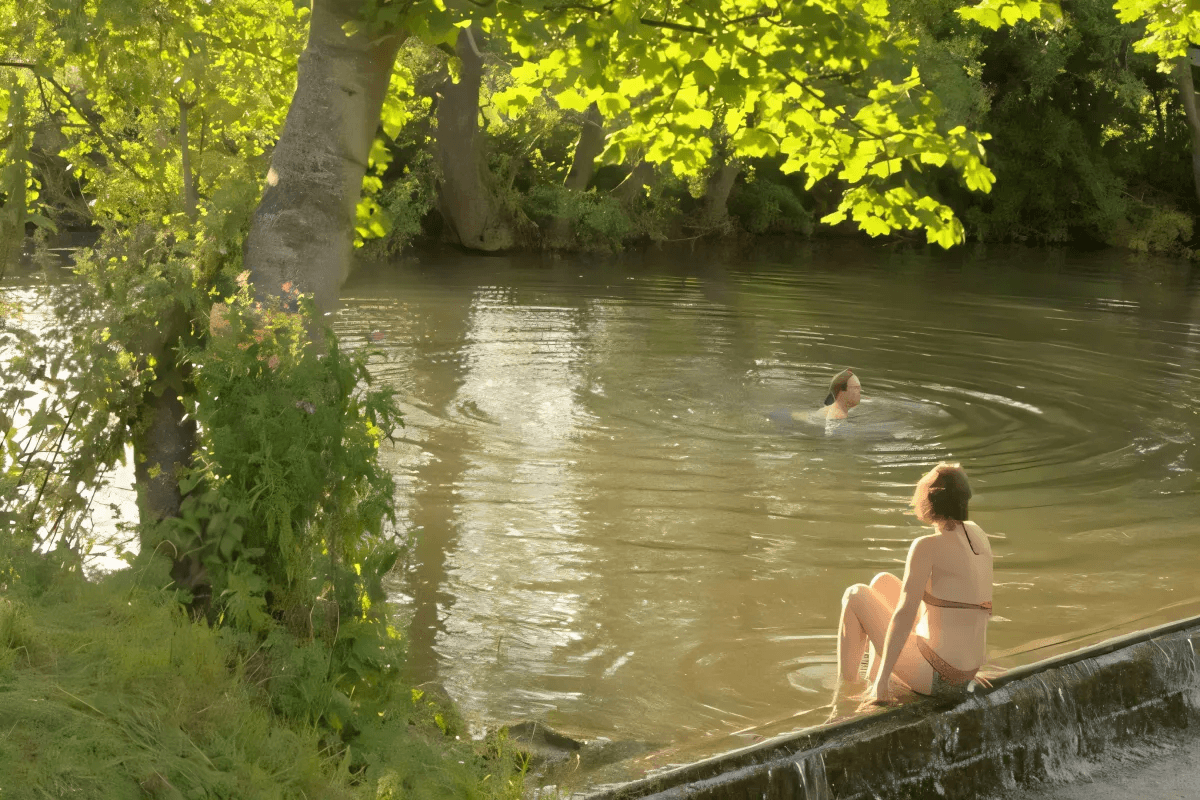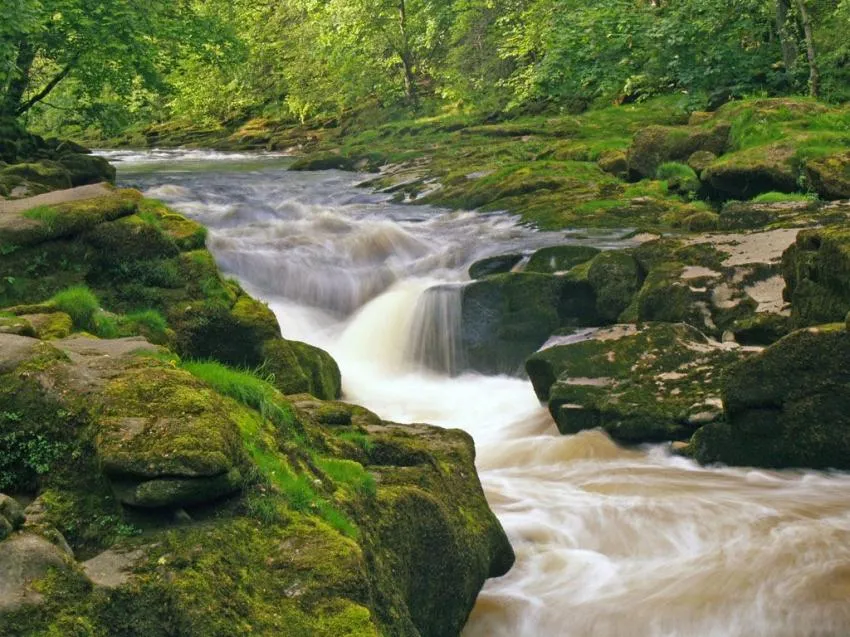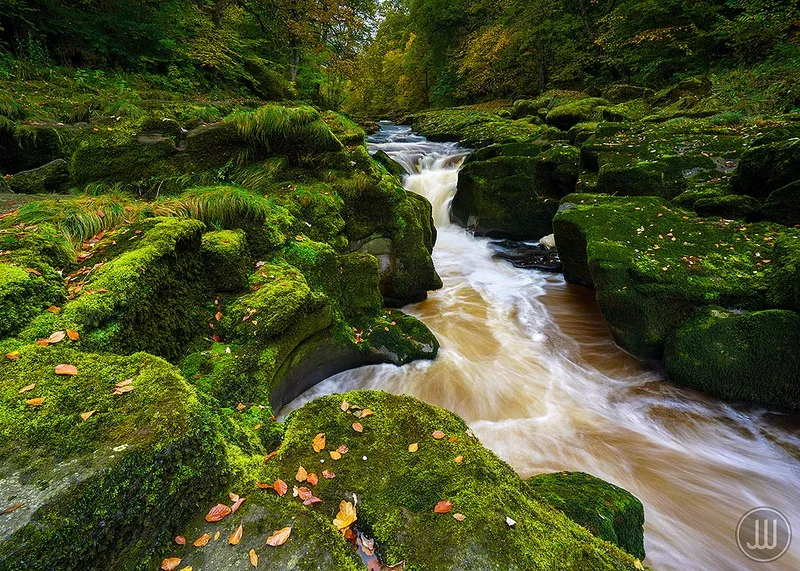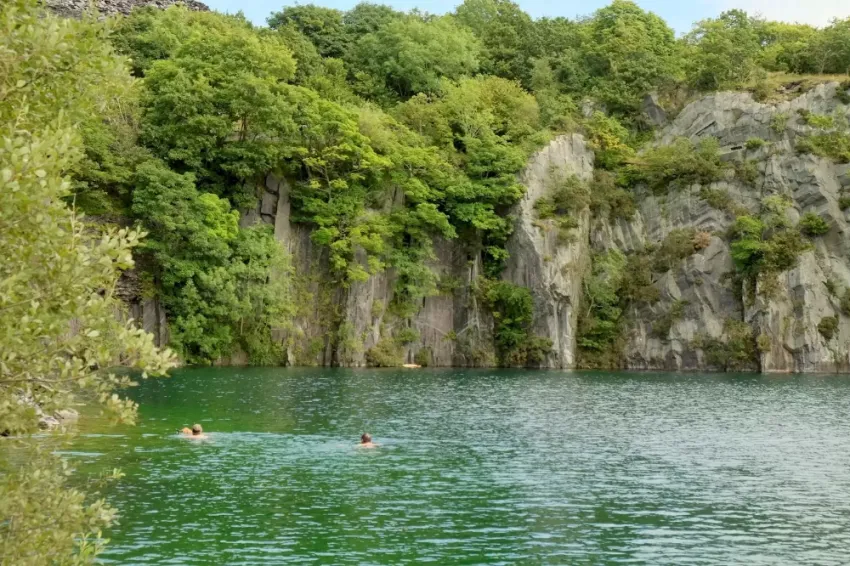Everything You Need To Know Before You Go Wild Swimming
Wild swimming or open water swimming can be defined as swimming in an open and natural body of water, these are typically rivers, lakes, or the sea.
Why do people go wild swimming?
A BBC article published last year described how this activity could be thought of as 'Britains new craze', listing numerous mental health benefits and also citing two foundations centered on attracting people to the activity.
Not only does wild swimming provide a sense of mental calmness, but it also has the economic benefit of being completely free, with the only real barrier to entry for the activity being the travel to and from said cold water spot.

My personal experiences of wild swimming include jumping into cold rivers or swimming in the sea at beaches. The cold water rush is something that you can never really get used to, however, it helps you in getting out of your comfort zone and some people also find cold water swimming to be very therapeutic.
Sometimes the cold water can feel painful at first, especially if walking into a river or the sea, however after initially submerging you will start to feel the benefits of the cold water on your body.
On a sunny day, I would typically choose the part of the sea or river that is receiving the most sunlight, however, be careful of the depth and currents present.
Dangers of Wild Swimming
It is important to acknowledge that wild swimming can be very dangerous and many people have died due to unexpected risks and hazards that are present in different bodies of water. I will list below some of the most common dangers associated with wild swimming:
1. Cold Water Shock
This can be fatal and can occur when jumping into cold water without taking the time to acclimatize, it is always best to ease in slowly as your body gets used to and braces for the colder temperatures.
Roughly 30 people die every year from entering the water through jumping, so it can't be taken lightly that forethought should always be present when swimming in unknown areas.
2. Hypothermia due to fall in body temperature
Hypothermia sets in when core body temperature falls below 35 degrees. Physiological signs will present themselves when the body is starting to get a little too cold, one such example is teeth-chattering/shivering, when this happens it is important to warm up and make sure you have dry towels and clothing nearby, you can also warm up from a little exercise such as a light jog.
3. Weil's disease
Swimmers should also be aware of certain health risks from water bodies, one of these is Weil's disease, spread from the urine of rats, this disease is easily treatable with antibiotics but can be fatal if not.
Ideally, you should avoid swimming in urban waterways such as canals, and if you find yourself swimming in one, make sure you shower and wash at home afterward. Take into consideration the water quality and pollution levels of any areas you are entering.
4. Cramps due to dehydration
Cramps can happen due to dehydration and often occur in the calf or lower leg, they may also happen if certain muscles have been overused. Always make sure to never go wild swimming alone so that if this occurs you can lie on your back and be rescued.
5. Slippery Rocks
When swimming in rivers or lakes, the moss-covered rocks can feel very strange and slippery at the bottom, you should also be aware of the danger of getting a foot stuck or twisting an ankle. Take care to avoid slippery areas when entering or are around water and consider the path you are taking.
6. Drowning
The danger of drowning is not one which should be taken lightly, on average 19 people a year die by drowning in open water, and a number of factors can lead to this such as currents, injuries, cramps, fast-flowing water and poor swimming ability.
To minimise these risks, you should always have a knowledge of the water body you are entering, look out for warning signs, don't go alone and avoid areas of considerable depths where there may be currents or potential areas to get trapped in.
7. Ticks
Ticks are small insects that live in areas with tall grass or woods and can latch onto human skin after close contact. Ticks are incredibly small and may not be immediately noticeable until you inspect your skin.
After wading through areas that are likely to have ticks you should always check and remove safely if you find one. Ticks can often carry Lyme disease, a bacterial infection spread through tick bites.
Although this disease is easily treated with antibiotics, it can cause flu-like symptoms that last for years.
Can You Go Wild Swimming Anywhere?
The matter of legality surrounding wild swimming depends on where you are in the world. Right to Roam laws have existed in several countries for many years such as Scotland, Sweden and Norway this allows people to venture into countryside and can swim freely in open water.
The right to swim in Scotland also extends to reservoirs as nearly all of them allow open access for swimming. However, it is important to note that although access is granted, there are many risks to consider in reservoirs. It is important to enter from a shallow and accessible depth and remain away from dam structures or intakes that could suck you in and drown you with the current.
It is also important to take into consideration the Outdoor Access Code in Scotland when entering water bodies which include principles such as: do not disturb surrounding wildlife, consider the interest of others, and do not pollute the environment.
The law for wild swimming Is different in England and there is not always a clear right to swim anywhere. You could be trespassing by swimming in specific areas and research will be needed to conclude whether or not landowners are willing to allow members of the public to swim in certain areas.
How To Go Wild Swimming Safely?

The obvious and first principle in relation to this question is can you and the people you are with swim? The safety element here comes in how deep the water is and can be, if your companions cannot swim and are not confident swimmers then, instead of staying out of the water for a deep sense of exclusion, they are best staying towards shallow ends of river banks or the shoreline.
As water can be deceptively deep and wild swimming spots may not be well mapped, it helps if a quick assessment can be taken of how deep the water is, but again caution should be taken due to unseen river currents or shallow water that can still sweep you away.
We must also be alert to the vastly different and colder temperatures experienced when submerged in any form of cold outdoor water. Even if you are a strong swimmer, the cold water shock, as previously mentioned, can cause cardiac arrest, especially in the water below 15 degrees.

One such example of how dangerous water can be is a stretch of river in England known as the 'Bolton Strid', an incredibly picturesque piece of the earth that is said to have taken the lives of anyone who has entered it.
The river goes from typically being wide and shallow, to turn vertical, the water drastically deepens as the cross-section narrows and within this deep water lie currents, caves and cracks in the rock which could easily suck you in. Bold and red signs with firm warnings against entering this fatal waterway can be seen littering the surroundings.
The area attracts many visitors and sightseers who are keen to simply view the phenomenon. The river claimed the lives of a newly-wed couple in 1998, they are thought to have been caught out by the rapidly rising water levels and subsequently drowned in the river, their bodies were found further downstream days later. The river, as much of a danger as it is, could also be thought of as a great geological feature.
The rock patterns can be of great interest to geologists and geographers that are keen to study the contours and shapes of the river's basins (within a safe distance). It also attracts photographers and bloggers keen to capture and comment on this unique place.
Benefits of Wild Swimming

There are as many grains of sand on Bondi Beach as there are health benefits to cold water swimming. One such benefit is a relaxed state of mind felt when submerging your body fully in relatively cold water, after the initial discomfort passes, a feeling of ambient ‘reset’ can pass over you, which many people find to be therapeutic.
Another benefit can be the cleansing of the skin via the high salt content of seawater. Salt helps to remove impurities from the skin and kills bacteria, as well as minerals found in seawater which can hydrate the skin, resulting in fairly holistic skin treatment.
In addition to the before-mentioned benefits to saltwater helping to clean the skin, there are further advantages associated with wild swimming.
1. Reducing Inflammation
Injuries from athletes involving swelling are typically treated with ice, and thus the same concept applies here, as cold water reduces blood flow from particular areas of the body, pain, and inflammation can be reduced. Coldwater swimming may therefore be beneficial to those with arthritis or other joint conditions.
2. Weight Loss
As colder temperatures force the heart to pump at a quicker rate and therefore the body is under more stress, more calories can be burned by swimming in cold water.
3. Endorphin Release
Different chemicals are released into the brain when the body is immersed in cold water. Endorphins are regarded as 'feel good' chemicals and are released during exercise, they can also be released in cold water as this is close to the pain barrier, therefore increasing happiness.
4. Stress Reduction
Similar to the reasons that cold water can assist in burning calories, being in cold water can be incredibly taxing on the body and therefore the resulting endorphin release can help to reduce stress.
5. Improved Circulation
Coldwater results in blood pumping faster around the body. By improving circulation, impurities are flushed away and the skin benefits from not only a clearer complexion but also from sealing pores which helps reduce the amount of dirt that can gather in them.
6. Improved Sleep Quality
Another chemical that can be released in the body when in cold water is prolactin, which is a hormone that can influence sleep as well as male fertility, there is a known link between the release of prolactin and tiredness.
7. Improved Self-Esteem
By leaving the comfort zone and doing something challenging we can boost our self-esteem and mental fortitude. Embracing a challenge such as being immersed in cold water can help our willpower too, which will reflect in other difficult tasks in life.
8. Stronger Immune System
Swimming often in cold water increases the number of white blood cells in the body, this provides a boost to the immune system as they fight infections.
9. Increased Testosterone
Coldwater increases the level of testosterone in men and also boosts the production of estrogen too. An increase in testosterone is known to improve confidence, muscle mass as well as energy levels.
10. Increased Brainpower
Immersing in cold water can help to boost your alertness as the sympathetic nervous system is activated. Noradrenaline is also released, which can increase our focus.
Opinions and Perspectives
The acclimatization advice is crucial. Took me weeks to build up my cold tolerance.
Started for the physical benefits, stayed for the amazing community I've found.
I do miss the pool sometimes, but nothing beats the connection with nature you get from wild swimming.
Important to note that not all benefits listed will apply to everyone. Listen to your body.
The burn more calories claim is interesting. I definitely eat more after a cold swim!
Anyone else notice seasonal changes in water quality? I find spring is often the clearest.
Just started wild swimming last month and already experiencing better sleep. This article explains why!
Remember to tell someone where you're going even if swimming with others. Basic safety that's often forgotten.
The improved circulation benefits are real. My Raynaud's symptoms have improved since I started cold water swimming.
I think the dangers section might scare off beginners. Most risks can be managed with common sense.
The article missed mentioning the importance of wearing bright swim caps for visibility.
Good point about the right to roam laws. We need better access to wild swimming spots in England.
The salt water benefits are great, but don't forget it can be harsh on your hair! Always rinse thoroughly afterward.
I'm curious about the increased brainpower claim. I definitely feel more alert after a swim, but wonder if it's just the cold shock.
The article should have mentioned the importance of bringing warm drinks for after your swim.
Winter swimming is amazing! Just make sure to decrease your time in the water as temperatures drop.
Has anyone tried winter swimming? I'm thinking of continuing through the colder months.
The point about checking for warning signs is crucial. I've seen too many people ignore them and get into trouble.
I started wild swimming during lockdown and it literally changed my life. The stress reduction benefits are incredible.
The article could have mentioned more about swimming technique in open water. It's quite different from pool swimming.
Someone mentioned water temperature monitoring earlier. I use a cheap thermometer, works perfectly for checking conditions.
The comparison of cold water benefits to grains of sand on Bondi Beach was a bit much. Let's stick to proven benefits.
I've found wearing neoprene socks really helps with those slippery rocks the article mentioned.
The geological info about The Strid was fascinating. Makes me want to visit, though definitely not to swim!
I love how the article breaks down the different health benefits, but my experience is that the mental benefits far outweigh the physical ones.
What about water temperature monitoring? I think that's a crucial safety aspect that wasn't covered fully.
I appreciate the article mentioning Weil's disease. It's often overlooked but can be really serious.
The skin benefits are real! My eczema has improved significantly since I started sea swimming regularly.
That's really dangerous advice about swimming alone. No matter how experienced you are, things can go wrong in seconds.
I actually disagree about never swimming alone. If you're experienced and take proper precautions, solo swimming can be incredibly peaceful.
The warning about reservoirs is crucial. My local area lost someone last year because they swam too close to an intake.
I find it interesting that the article mentions testosterone increases. I've definitely noticed feeling more energetic since I started regular wild swimming.
As someone who teaches swimming, I can't stress enough how important it is to know your limits. The open water is very different from a pool.
The bit about ticks is really important. I got Lyme disease from swimming in a lake last year. Always check yourself thoroughly afterward.
Anyone else notice how the article didn't mention the social aspect? Some of my best friendships have formed through wild swimming groups.
The tips about acclimatization are spot on. I once jumped straight in and the cold water shock was terrifying. Always ease in gradually.
To answer about Scottish lochs, I swim in them regularly. Just be prepared for VERY cold water, even in summer. But the scenery makes it worth it!
I'm a bit skeptical about some of these health claims. Has anyone seen actual scientific studies backing up the improved immune system benefits?
The legal aspects in England are so frustrating compared to Scotland. I wish we had similar right to roam laws here.
While I appreciate the article's thoroughness on safety, let's not forget that millions of people swim wild safely every year. We shouldn't let fear stop us from experiencing this amazing activity.
These health benefits are fascinating. I started cold water swimming for weight loss but stayed for the mental clarity it gives me.
Does anyone have experience swimming in Scottish lochs? I'm planning a trip there this summer and would love some advice on good spots.
The part about The Bolton Strid gave me chills. I visited there once and the power of the water is truly terrifying.
The article makes some great points about safety, but I think it understates the importance of checking water quality before swimming. I learned this the hard way after getting sick from swimming in a polluted river.
I've been wild swimming for years and can totally vouch for the mental health benefits. Nothing beats that natural high after a cold dip!
